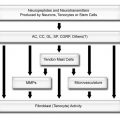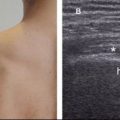1. Anatomy and Function
The LHBBT consists of two different but continuous portions: the proximal is named intra-articular, while the distal is termed extra-articular. The intra-articular portion is extrasynovial, arises from the glenoid labrum and supraglenoid tubercle and runs distally through the rotator interval before exiting the glenohumeral joint. The extra-articular portion travels in the intertubercular groove covered by a reflection of the synovial sheath, which communicates with the glenohumeral joint and ends in a blind pouch adjacent to the musculotendinous junction.
Both intra and extra-articular portions are stabilized by the biceps reflection pulley, which consists of the coracohumeral ligament, the superior glenohumeral ligament, and deep fibers of the subscapularis and supraspinatus tendons. The biceps vinculum is a loose membranous tissue that attaches the extra-articular portion to the periosteum of the intertubercular groove.12 Although the transverse humeral ligament was historically thought to contribute to LHBBT stability, its function and existence has come into question and recent studies suggest that there is actually no distinct anatomical structure covering the intertubercular groove. Instead, what was once thought to be a transverse humeral ligament is composed of a sling formed mainly by the fibers of the subscapularis, with contributions from the coracohumeral ligament, supraspinatus and pectoralis major tendons.13,14
The proximal LHBBT is richly innervated by a network of thinly myelinated nerve fibers containing substance P and calcitonin gene-related peptide. These substances are responsible for vasodilatation and plasma extravasation as well as transmitting pain.15 As the neural network progresses distally, it becomes more sparse.16 The tendon receives its vascular supply from the thoracoacromial artery (via osteotendinous branches) and the brachial artery (via musculotendinous branches).17 A critical zone of decreased vascularity is described where the tendon passes across the rotator interval.18
The role of the LHBBT at the shoulder is debatable, and most authors have considered it an atavic structure with no true function at the glenohumeral joint. The primary function of the biceps is to act as a flexor of the elbow and as a supinator of the forearm.
Stay updated, free articles. Join our Telegram channel

Full access? Get Clinical Tree





